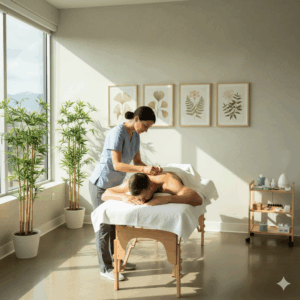Facial rejuvenation treatments have become increasingly popular as people seek ways to restore a youthful glow, smooth wrinkles, and improve skin texture. However, not all treatments are suitable for every skin type. Choosing the best facial rejuvenation treatment involves understanding your skin’s unique needs and selecting procedures that offer optimal results with minimal risks. This guide will help you navigate the options and find the right treatment tailored for your skin type.
Understanding Your Skin Type
Before considering any facial rejuvenation procedure, it is essential to identify your skin type. The four primary skin types are:
-
Normal Skin: Balanced moisture and oil levels, minimal sensitivity.
-
Dry Skin: Lacks moisture, prone to flaking and dullness.
-
Oily Skin: Excess sebum production, prone to acne and enlarged pores.
-
Combination Skin: Oily in some areas (typically T-zone), dry or normal in others.
-
Sensitive Skin: Easily irritated, prone to redness and inflammation.
Knowing your skin type will guide you in choosing treatments that complement your skin’s natural characteristics.
Common Facial Rejuvenation Treatments
-
Chemical Peels
Chemical peels use acids to exfoliate the top layers of skin, promoting new cell growth and revealing smoother, more radiant skin underneath.
-
Best for: Normal, oily, and combination skin types.
-
Considerations: Those with sensitive or very dry skin should opt for mild peels or avoid deep chemical peels to prevent irritation.
-
Microdermabrasion
This technique gently sands away dead skin cells using fine crystals or a diamond-tipped wand, stimulating collagen production.
-
Best for: Normal, oily, and combination skin types.
-
Considerations: Sensitive or rosacea-prone skin may find this too abrasive.
-
Laser Resurfacing
Lasers remove layers of skin and stimulate collagen, reducing wrinkles, scars, and pigmentation. There are ablative and non-ablative lasers with varying downtime.
-
Best for: Normal to oily skin types with concerns about aging or scarring.
-
Considerations: Dry and sensitive skin requires careful assessment, and a patch test is often recommended.
-
Microneedling
Microneedling uses tiny needles to create micro-injuries that trigger skin repair and collagen production.
-
Best for: Most skin types, including sensitive skin, when performed properly.
-
Considerations: Avoid if you have active acne or skin infections.
-
Injectables (Botox, Dermal Fillers)
These treatments reduce wrinkles or add volume to the face. Botox relaxes muscles, while fillers plump up areas like cheeks or lips.
-
Best for: All skin types, but individual skin conditions and allergies must be considered.
-
Considerations: Requires a qualified professional to avoid complications.
-
Hydrafacial
A multi-step treatment that cleanses, exfoliates, and hydrates skin using a patented device.
-
Best for: All skin types, including sensitive and dry skin.
-
Considerations: Gentle and effective for skin hydration and brightness.
How to Choose the Right Treatment for Your Skin Type
-
For Dry Skin:
Focus on treatments that hydrate and nourish. Hydrafacials and mild chemical peels can improve texture without stripping moisture. Avoid aggressive exfoliation and deep laser treatments unless supervised by a dermatologist. -
For Oily and Acne-Prone Skin:
Chemical peels with salicylic acid or glycolic acid help control oil and clear pores. Microdermabrasion and certain laser treatments can reduce acne scars and minimise pores. Avoid heavy, oily skincare products post-treatment. -
For Sensitive Skin:
Gentle options like hydrafacial and microneedling performed by experienced professionals are preferable. Avoid deep peels or harsh lasers that can exacerbate redness or inflammation. -
For Normal and Combination Skin:
You have more flexibility. Treatments like chemical peels, microdermabrasion, laser resurfacing, and injectables can all be beneficial depending on your specific concerns.
Important Tips Before Undergoing Treatment
-
Consult a Dermatologist or Skincare Professional:
A skin assessment can help identify the best options and avoid adverse reactions. -
Patch Test:
For chemical peels or laser treatments, patch tests reduce the risk of allergic or adverse responses. -
Follow Aftercare Instructions:
Post-treatment care is crucial to healing and maximising benefits. -
Set Realistic Expectations:
Understand the possible results and any downtime involved.
Conclusion
Choosing the best facial rejuvenation treatment depends largely on your skin type and the specific issues you want to address. By understanding your skin’s needs and consulting with a professional, you can select a treatment that enhances your natural beauty safely and effectively. Whether you prefer a gentle hydrating facial or a more advanced laser procedure, there is a facial rejuvenation option suited to your skin type that can help you achieve a fresh, youthful complexion.








